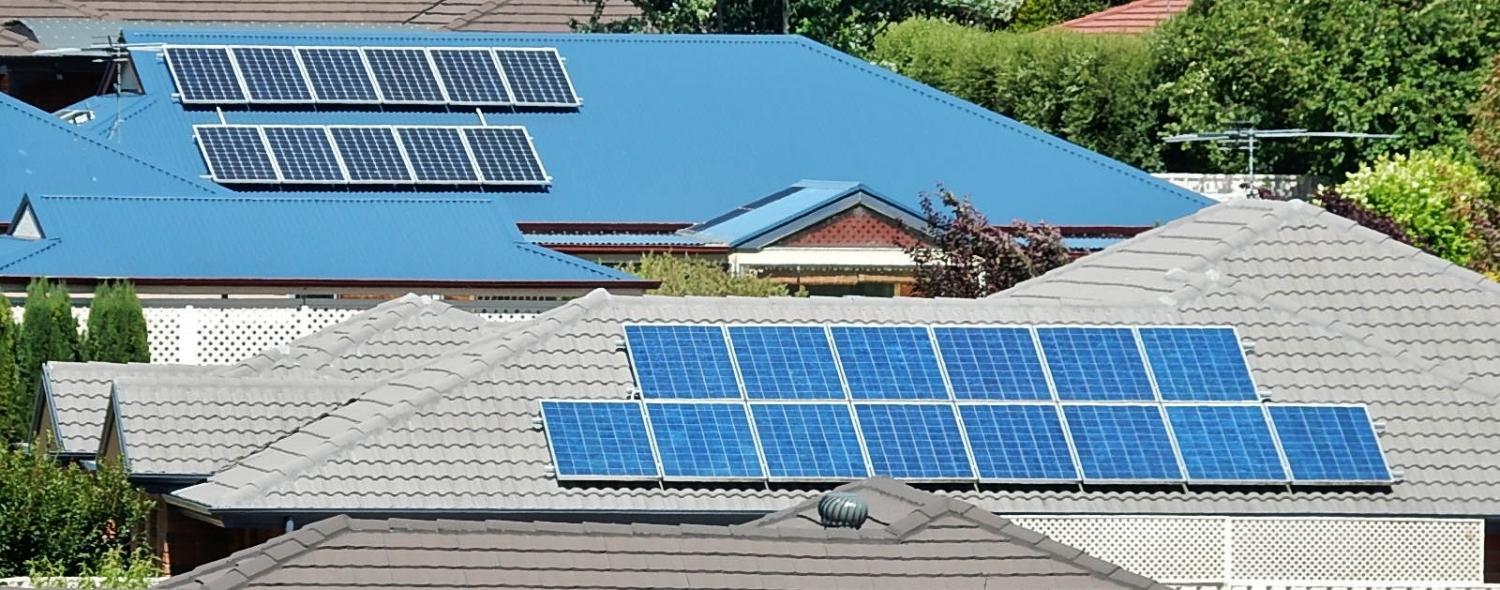Australia is experiencing a remarkable renewable energy transition. The pipeline for new wind and solar photovoltaic (PV) electricity systems is 6-7 Gigawatts (GW) per year for the period 2019-21. This equates to 250 Watts per person per year compared with about 50 Watts per person per year for the EU, Japan, China, and the United States.
The electricity sector is on track to deliver Australia’s entire Paris emissions reduction targets five years early, in 2025. This is one of the world’s fastest sustainable rates of emissions reduction.
In 2018, Australia deployed 5.2 GW of PV and wind systems (3.5 GW ground-mounted, 1.7 GW roof-mounted). Clean Energy Regulator data indicates that the current ground-mounted PV and wind pipeline is about 4.3 GW per year. Roof-mounted PV is increasing by about 50% per year and might exceed 2 GW in 2019, for a total renewables deployment of about 6.3 GW. At this rate, Australia is on track to reach 50% renewable electricity in 2024 and 100% in 2032.
The electricity sector is on track to deliver Australia’s entire Paris emissions reduction targets five years early, in 2025. This is one of the world’s fastest sustainable rates of emissions reduction. Remarkably, the net cost is zero because expensive fossil fuels are being replaced by cheaper renewables. Australia is on track for deep and rapid greenhouse emissions reductions through deep renewable electrification.
Straightforward deployment of off-the-shelf storage (pumped hydro and batteries) and stronger interstate high voltage powerlines can be used to stabilise a 100% renewable energy grid at modest cost. It is critical that federal and state governments facilitate the construction of additional transmission and storage to maintain the momentum.

The Australian Renewable energy pipeline is sustainable in the long term. The average age of Australia’s coal power stations is 30 years. The cost of electricity from PV and wind is already similar to the cost of fuelling and maintaining most of the black coal fleet. Premature retirement of many existing black coal power stations is likely during the 2020s, enlarging the market for PV and wind. PV and wind are ready to compete effectively with gas for heating and with oil for land transport (via electric vehicles). Conversion of electricity to renewables coupled with deep renewable electrification of heating and land transport allows the elimination of two-thirds of Australian greenhouse emissions over 10-20 years (depending upon policy settings) at approximately zero net cost.
In 2017, renewables accounted for two-thirds of global net new capacity additions (Figure 2). China, the EU, India, the US, and Japan accounted for 83% of global new renewable deployment in 2017. Renewables, particularly PV, comprise an ever-increasing share of capacity additions. The continued exponential growth of PV (and wind) and continual falling prices mean that the old certainties around fossil fuels are a poor guide to the future prospects for renewables. A very rapid transition to renewables is in process.

If developing countries follow a fossil fuel intensive pathway then very serious damage will be done to earth’s climate. On the other hand, following a renewables pathway coupled with ending land clearing decouples economic development from climate damage.
Most of the world’s population lives in the sunbelt (+/- 35° of latitude). The sunbelt is also where most of the world’s growth in population and energy consumption is occurring. There are no cold winters and heating loads are small. This region has ample sunshine and low seasonal variation of both demand and solar insolation. Most countries are within a few thousand kilometres of regions with excellent wind resources, which allows high voltage DC powerline connection and gives access to the frequent counter-correlation of solar and wind.
There are also vast numbers of excellent sites for off-river pumped hydro storage and low requirement for (expensive) seasonal storage. These countries are more like Australia rather than Europe or North America or north Asia.
Australia is on track for deep and rapid greenhouse emissions reductions through deep renewable electrification, at approximately zero net cost. Most countries can follow the Australian path and transition rapidly to renewables with consequent large avoidance of future greenhouse emissions (Table 1).
| Sunbelt | Australia | The north | |
|---|---|---|---|
| Latitude | Low | Low | High |
| Solar resource | High | High | Low-Moderate |
| Seasonality of solar | Low | Low | High |
| Access to wind | Moderate | High | High |
| Heating load | Low | Low | High |
| Need for seasonal storage | Low | Low | High |
| Pumped hydro site count | High | High | High |
| Wealth & technology | Low-Moderate | High | High |
| Current fossil fuel capacity | Low | High | High |
Table 1: Developing countries have good prospects for bypassing a fossil fuel era. Green indicates an advantage for renewable development, red a disadvantage, and orange neither an advantage or disadvantage.
Sections of this article are taken from a previously published paper by this author, available here.

